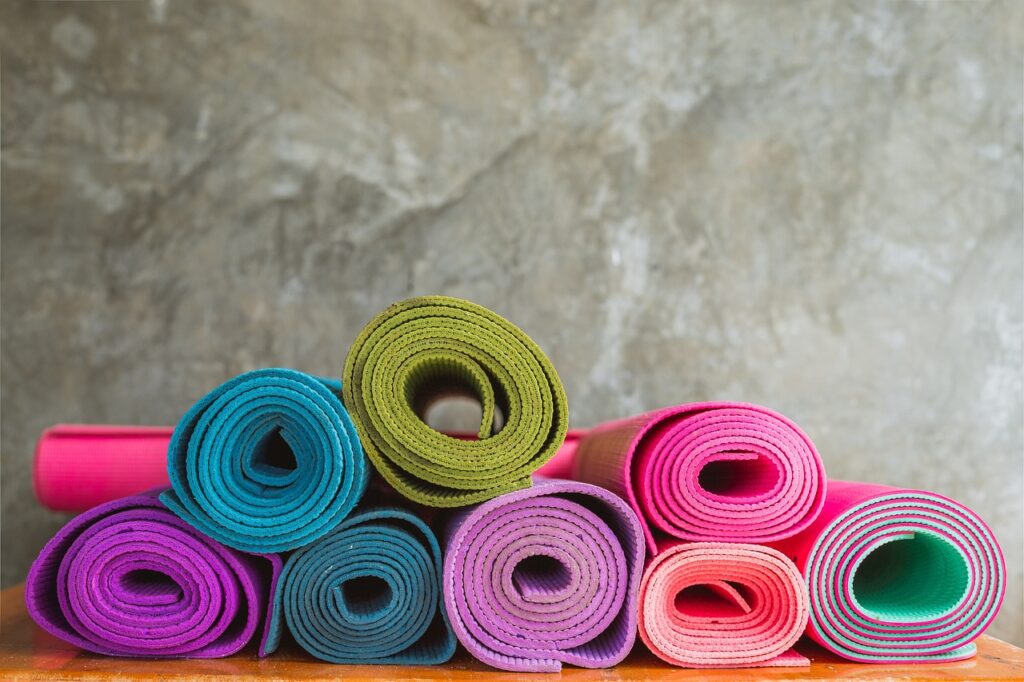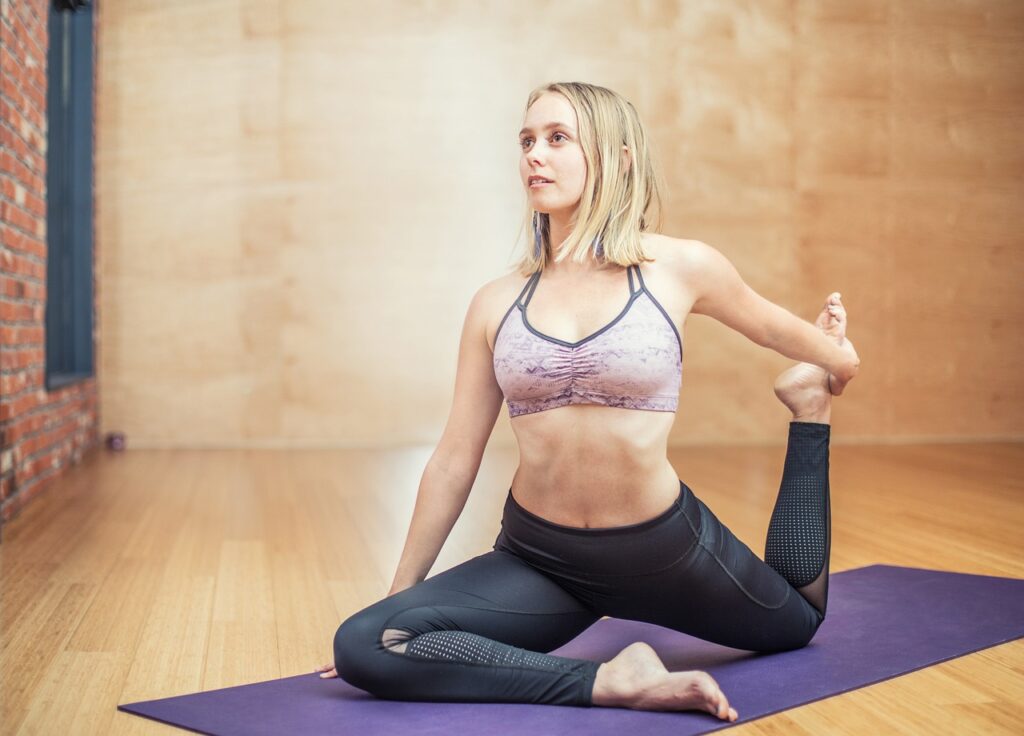Here is the Definitive Guide to Selecting a Great Yoga Mat: The Path to Inner Tranquility and Comfort

A yoga mat is essential for comfort and stability during yoga practice. It provides cushioning, enhances grip, and helps maintain balance, making it ideal for poses and exercises of all difficulty levels. Yoga is not a practice in which you train to improve your flexibility or strength-or even something in which you indulge to gain flexibility or strength or inner peace. Having been practicing yoga for a few years and in my head thought I was some newbie on this journey, I can say that your yoga mat can give much to your practice. It is, in fact, a basis where one will stretch, breathe, and experience some moments of inner quiet. While selection of the best yoga mat may not actually look much like an attractive design, comfort, durability, and support are as well when you consider the most useful ways to choose the best yoga mat for practice.
This guide outlines some of the biggest choices to make when making a decision about just which yoga mat is perfect for your practice.
Table of Contents
Why the right yoga mat matters
This is where your body meets the earth. Your yoga mat is so much more than just some rubber piece or fabric- it is the space where you connect with yourself. A good quality yoga mat keeps you aligned, lessens joint stress, and offers support to balance. If you use a low quality mat, you will get frustrated with the slippiness or lack of support.
Chief Factors in Deciding Your Yoga Mat
1. Material
This will determine the hardness, texture, and eco-friendliness of your yoga mat. Here are the most common ones.
- PVC (Polyvinyl Chloride): Most inexpensive mats use PVC. That stuff is as tough as heck, but with grippy goodness. It’s not so great for the earth, though-it’s synthetic material, and it isn’t breaking down in the landfill anytime soon.
Thermoplastic Elastomer: Eco-friendly version and recyclable, excellent cushioning and grip. Its duration may not, however be as good as that of PVC mats.
Natural Rubber: Biodegradable and friendly to the environment; great for grip. Heavier and highly pungent new smell. Probably the best option for the environmentally conscious practitioner.
Cork: This is the natural kind of mat for yoga. It is antimicrobial-that is, resistant to bacteria and odor buildup. This is totally sustainable and provides a firm, textured grip which proves very helpful in sweatier sessions.
Jute: The other eco-friendly mat is the jute mat. This would be a natural feel for people who prefer a bit of hardness without much softness in the cushion.
2. Thickness
Though the thickness may vary, it is undoubtedly conducive to comfort, balance, and support that are offered to the joints.
Standard (3-4mm) : That is what standard thickness for a yoga mat should be-that is between 3-4 mm. People will find it comfortable and stable. Deeply connected with the floor yet still cushioned over your joints.
Travel (1-2mm) : Thin, travel mats are very light and packable, though not offering much cushioning, which can sometimes be troublesome to practice on, like the knees.
Thickness (5-8mm) : If you can feel the sensitivity of your joints or feel like you need a bit of extra padding in those areas, then you probably require a thicker mat. Thicker mats provide more comfort but make you feel less in touch with the ground, thus maybe making balance poses worse.
3. Grip and Texture
Slip-resistant mats are a necessity especially when you’re doing styles like hot yoga, which is very moist during the workout. Example: texture on your yoga mat adds additional grip, and some of the mats are naturally tacky, some have raised textures on them to help prevent slipping.
Smooth mats : These are the best for people who enjoy the flowing type of practice, such as Vinyasa-where transition from pose to pose is very fast. Mats are slick in nature so it gives some grip.
Textured mats : For those who feel they need more grip. If you are the type that sweats a lot when practicing, then you know that you would need a bit of added grip. The textures of the cork and jute mats are by their very nature.
4. Size
For example, a standard yoga mat would measure 68 inches in length and 24 inches in width. More than a little taller, then you’d look for extra-long mats, more than 72 inches long. Longer mats will give you ample space to stretch out fully. You can also look for wider mats available if a wide mat can bring comfort to you against the standard width.
5. Eco-Friendliness
Many yogis like mats that extend the practice in consonance with the holistic and earth-friendly nature of the activity. If that is something a problem to you, that would be a consideration in choosing environmentally friendly materials, such as natural rubber, cork, or jute. PVC mats contribute even more toward environmental degradation because they take ages to decompose.
6. Price Range
Yoga mats can be bought within a wide price range from less than 200 Rs to more than 1000 Rs. The more costly the yoga mat, the sturdier, softer, and better grippy it usually is. However, for beginners, low-priced ones would be best because you might not know what sort of mat you prefer.
These are Best Mats
3. Amazon Basics 13mm Extra Thick NBR Yoga Mat
4. WiseLife TRU Body Alignment Yoga Mat
7. Lifelong Dual Color TPE Material Yoga Mat
8. WiseLife Printed 6MM Yoga Mat
Care and Maintenance of Your Yoga Mat
Once you’ve selected your favorite yoga mat, you’ll take great care of it so that it can be with you for many more years. Most of the yoga mats can be cleaned by putting them in a wash in soapy and water mixture. In case you tend to be a little sweati after your exercising, you will need to wipe it down very regularly. Because naturally cork has antimicrobial properties, some will need to clean it a little bit every now and then.
Do not let your mat lie in direct sunlight because in due time it will damage material such as rubber or PVC.
Conclusion: Your Yoga Mat, Your Haven
A good quality yoga mat would definitely improve your practice and help you support everything in focus more on flow. Whether it’s environment-friendly, cushiony enough, or easy to carry, there is absolutely an ideal mat for everyone. Never forget that yoga is a journey, and having the right mat will certainly guide you further on your road to inner peace and wellness.
